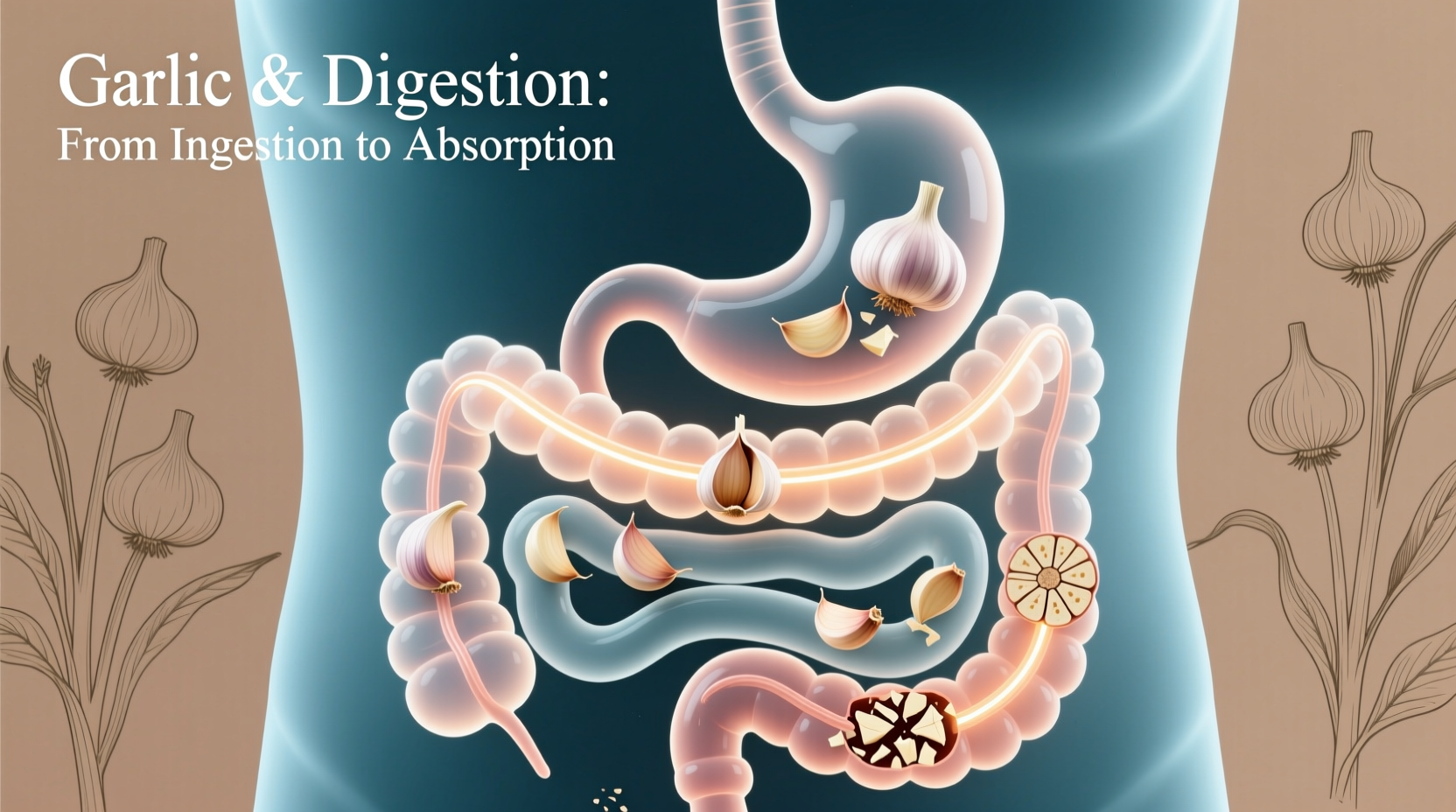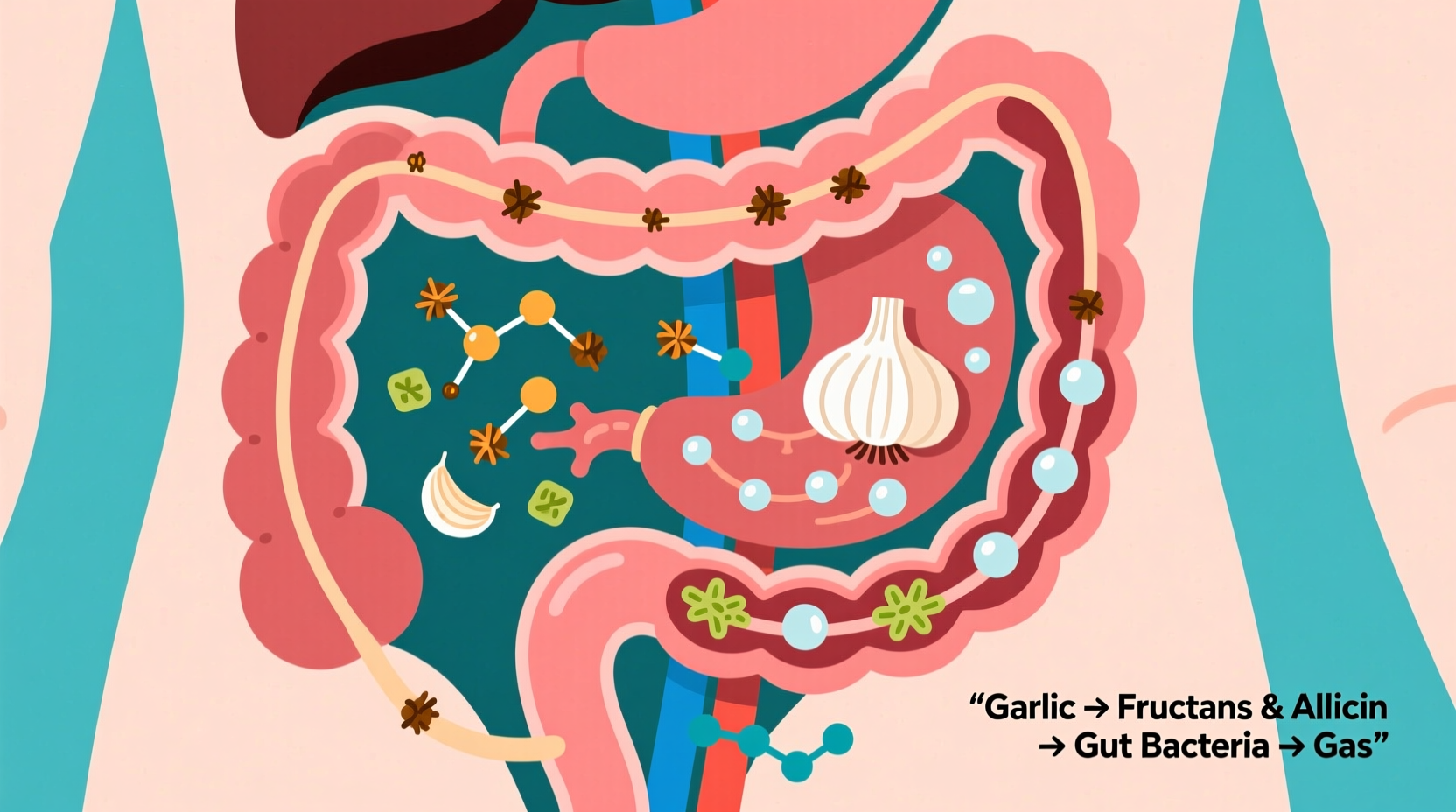Have you ever wondered why that delicious garlic bread leaves you feeling uncomfortably bloated? You're not alone. Understanding why garlic makes you gassy can help you enjoy this flavorful ingredient without the embarrassing side effects. Let's explore the science behind this common digestive issue and discover practical solutions that actually work.
The Biochemical Reason Behind Garlic Gas
Garlic contains specific compounds that trigger gas production in your digestive system. The primary culprits are:
| Compound | Type | Digestive Impact |
|---|---|---|
| Fructans | FODMAP carbohydrate | Resists digestion, fermented by gut bacteria producing gas |
| Allicin | Sulfur compound | Creates distinctive odor in gas emissions |
| Inulin | Dietary fiber | Contributes to fermentation process in large intestine |
According to research published in the Journal of Gastroenterology and Hepatology, fructans account for approximately 75% of garlic's gas-producing potential. These short-chain carbohydrates pass through your small intestine undigested because humans lack the enzyme fructanase needed to break them down. When they reach your large intestine, your gut bacteria feast on them through fermentation, releasing gas as a natural byproduct.

Why Some People Experience More Gas Than Others
Your individual digestive system determines how severely garlic affects you. Several factors influence your reaction:
- Gut microbiome composition: People with higher concentrations of gas-producing bacteria experience more pronounced effects
- Fructose malabsorption: Those with this condition (affecting 30-40% of Western populations) struggle particularly with garlic's fructans
- Small intestinal bacterial overgrowth (SIBO): This condition amplifies gas production from FODMAP foods
- Genetic factors: Some people naturally produce more of the enzymes that break down FODMAPs
The American College of Gastroenterology reports that digestive sensitivity to garlic varies significantly across populations, with Asian populations generally showing higher tolerance due to historical dietary exposure. This explains why garlic-heavy cuisines like Chinese and Korean cooking rarely cause widespread digestive issues in their native populations.
When Garlic Gas Signals a Bigger Problem
While occasional gas from garlic is normal, certain symptoms warrant medical attention. Use this context boundary guide to determine when to consult a healthcare provider:
- Normal reaction: Mild bloating within 1-3 hours of consumption, resolving within 24 hours, manageable with dietary adjustments
- Consult a doctor: Severe pain, persistent diarrhea, blood in stool, unexplained weight loss, or symptoms lasting more than 48 hours after garlic consumption
According to Mayo Clinic guidelines, if you experience these severe symptoms consistently after eating garlic or other FODMAP-containing foods, you might have irritable bowel syndrome (IBS) or another digestive disorder requiring professional diagnosis and management.
Practical Solutions to Reduce Garlic-Induced Gas
You don't need to eliminate garlic from your diet completely. Try these evidence-based strategies to minimize gas while preserving flavor:
- Start with small amounts: Begin with 1/4 to 1/2 clove daily, gradually increasing as your tolerance improves
- Cook garlic thoroughly: Heating breaks down some gas-producing compounds - sauté for at least 5 minutes before adding other ingredients
- Try black garlic: This fermented version contains significantly reduced fructans while offering complex umami flavor
- Pair with digestive aids: Consume with ginger, peppermint, or fennel to support digestion
- Consider enzyme supplements: Products containing alpha-galactosidase (like Beano) can help break down FODMAPs
A clinical trial published in Nutrients journal found that cooking garlic reduces its fructan content by approximately 25-30%, making it more digestible while preserving many health benefits. For those with significant sensitivity, roasted garlic offers the most dramatic reduction in gas-producing compounds while maintaining flavor complexity.
Garlic Alternatives for Sensitive Digestions
If you need to significantly reduce garlic consumption, these flavorful alternatives provide similar culinary benefits without the gas:
- Asafoetida (hing): A resin with garlic-like flavor used in Indian cuisine (use sparingly - 1/8 teaspoon replaces 1 clove garlic)
- Garlic-infused oil: Provides garlic flavor without the fructans (the compounds don't transfer to oil)
- Chives: Milder allium option with significantly lower FODMAP content
- Celery seed: Offers savory depth without digestive issues
Remember that individual tolerance varies significantly. The Monash University Low FODMAP app, developed by researchers at Australia's leading digestive health institution, provides specific serving size recommendations for garlic based on your sensitivity level.
Understanding Your Personal Garlic Tolerance
Developing your personal garlic tolerance involves careful observation and gradual experimentation. Follow this practical timeline to assess your sensitivity:
- Elimination phase (2-6 weeks): Remove all high-FODMAP foods including garlic from your diet
- Reintroduction phase: Introduce 1/4 clove of cooked garlic every other day
- Assessment phase: Track symptoms for 24-48 hours after each serving
- Personalization phase: Determine your maximum comfortable serving size
This method, recommended by the International Foundation for Gastrointestinal Disorders, helps most people identify their personal garlic tolerance threshold within 8-10 weeks. Approximately 65% of people with mild garlic sensitivity can eventually consume small amounts without significant discomfort.











 浙公网安备
33010002000092号
浙公网安备
33010002000092号 浙B2-20120091-4
浙B2-20120091-4